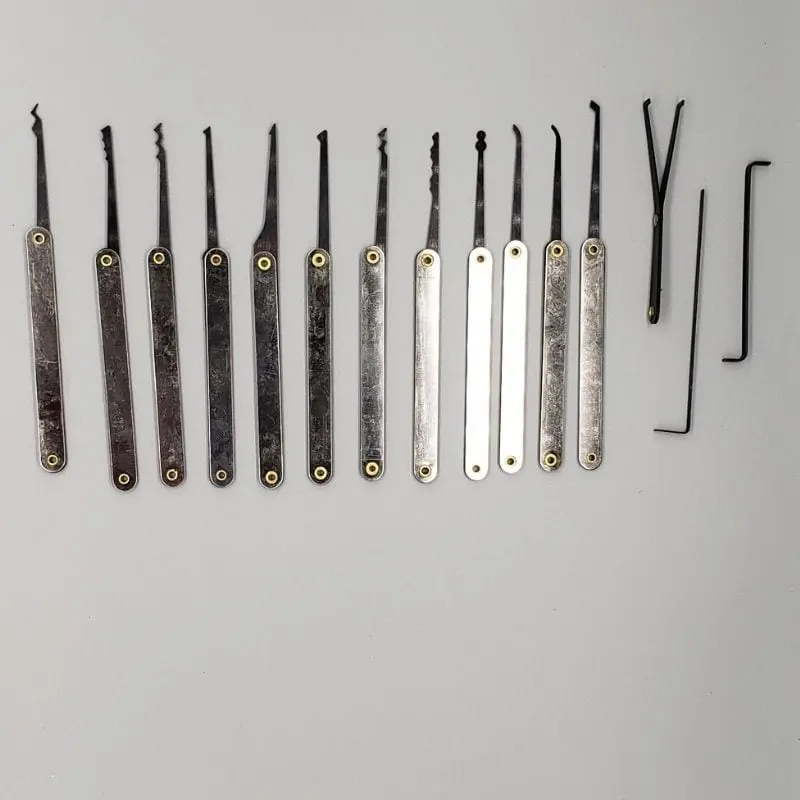Greetings, fellow Modern Warriors! Today, we dive further into the world of LockSport, an art that requires skill, patience, and the right tools. In this blog post, we will explore the essential tools every aspiring lockpicker should have in their arsenal. So, grab your tension wrench and let’s dive in!

- Lockpicks: At the heart of lockpicking lies the lockpick itself. These slender, specialized tools come in various shapes and sizes, each designed to manipulate the internal components of a lock. The most common types of lockpicks include:
- Hook Picks: These versatile picks are ideal for single-pin picking and provide excellent feedback when navigating the lock’s pins.
- Diamond Picks: Known for their versatility, diamond picks are effective for both single-pin picking and raking techniques.
- Rake Picks: Rake picks feature a series of ridges or peaks, allowing for quick and efficient manipulation of multiple pins at once.
- Tension Wrenches: Often paired with lockpicks, tension wrenches apply rotational force to the lock’s cylinder, allowing the pins to be set. They come in various shapes, including L-shaped and twisted.
- Extractor Tools: Lockpicking is not always smooth sailing, and sometimes, things can go awry. That’s where extractor tools come in handy. These specialized tools are used to remove broken key fragments or other foreign objects that may hinder the lock’s operation. Extractor tools are available in different sizes and shapes to accommodate various lock types.
- Practice Locks: To truly hone your lockpicking skills, it is essential to have a practice lock. These locks are specifically designed for training purposes, allowing you to understand the mechanics of lockpicking without the risk of damaging a functional lock. Look for practice locks that offer varying levels of difficulty, enabling you to progress as you become more proficient.
- Lock Lubricant: A well-maintained lock is easier to pick, and that’s where lock lubricant comes into play. Applying a small amount of lock lubricant to the lock’s internals can significantly improve its responsiveness and ease of picking. Look for a high-quality, graphite-based lubricant that won’t leave residue and won’t attract dust or debris.
As we conclude our exploration of the basic tools needed for lockpicking, remember that lockpicking is a skill that requires practice, patience, and respect for the laws and ethical considerations surrounding the practice. With the right tools and dedication, you can unlock a world of knowledge and develop a valuable skillset.






























